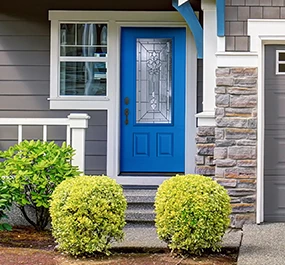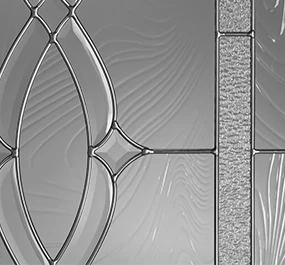Plastpro's own Herb Martin has some tips and tricks to share, keeping your door buying process mistake-free!
Just a few years ago, the owner of a new multifamily complex in the Pacific Northwest chose fiberglass entry doors in the hopes of reducing future maintenance and ensuring long-term durability.
Not long after installation, however, the doors wouldn’t seal. Entry doors should last for decades, but these were failing much sooner.
Although they were constructed of fiberglass, the doors had exposed edges made of wood, which the owner discovered after their installation. Once the doors were subjected to rain and extreme temperatures, their wood stiles and rails absorbed moisture, and the doors needed to be replaced.
Sometimes these lessons are learned the hard way, says Herb Martin, Plastpro’s district sales manager. Choosing the right material—fiberglass, wood, or steel—can mean the difference between a door that lasts for decades and one that fails within a few years.
Keep Weather in Mind
Wood is full of character, but its longevity can be affected by sunlight, rain, hail, wind, and extreme temperatures, which can cause fading, twisting, splitting, and rotting. “Wood doors need to be treated like furniture,” Martin says. “Based on my experiences, you must maintain them every six months.”
Steel, although stronger than wood, may corrode when exposed to the elements. Once rust reaches the exterior, the door’s integrity has been compromised. Steel is also susceptible to dents and dings that can exacerbate its potential to rust.
And despite the experience at the multifamily complex, fiberglass doors can withstand extreme environmental conditions if they are designed and constructed correctly. They can also endure wear and tear and require little maintenance. If you choose fiberglass, look for doors that are composite on all edges, such as fiberglass doors from Plastpro.
Testing for Brutal Conditions
Not only must entry doors survive day-to-day environmental changes, but they also need to hold up in severe weather. Extensive third-party testing can provide information about the physical and structural capabilities of a door. For example, testing has revealed that steel and wood are susceptible to damage from flying debris during high winds; they can also break or fail when pressure develops behind the door.
Compared with wood or steel, fiberglass doors have high impact resistance and are not easily penetrated, dented, or cracked. For example, during design pressure testing, Plastpro doors may bend when pressure builds; however, when used with composite stiles and rails, they will return to their original position after pressure is released.
Because entry doors are typically installed during rough framing, they must also tolerate impact from toolbelts and workers carrying materials in and out of the building or home. “Especially with steel, there are often expensive callbacks where a door needs to be serviced soon after installation because it was damaged during construction,” Martin explains.
Sustainability at Every Level
The first question many architects and owners ask when selecting a door is how to make a sustainable, responsible choice, Martin says.
With high insulating values, steel outperforms wood in terms of energy efficiency. Fiberglass doors offer the highest reduction in energy use because they’re manufactured with a high-density, insulating foam, which helps maintain interior air temperatures. And because fiberglass lasts for decades, the doors are replaced less often, keeping waste out of the landfill.
“Today, high-end homes averaging between $1.2 million and $1.6 million are now using fiberglass,” Martin says. “It has to do with durability, maintenance, and energy efficiency, but it’s also based on looks: the shadow lines and the crisp detail the doors offer.”
Originally Published by Architect Magazine:



